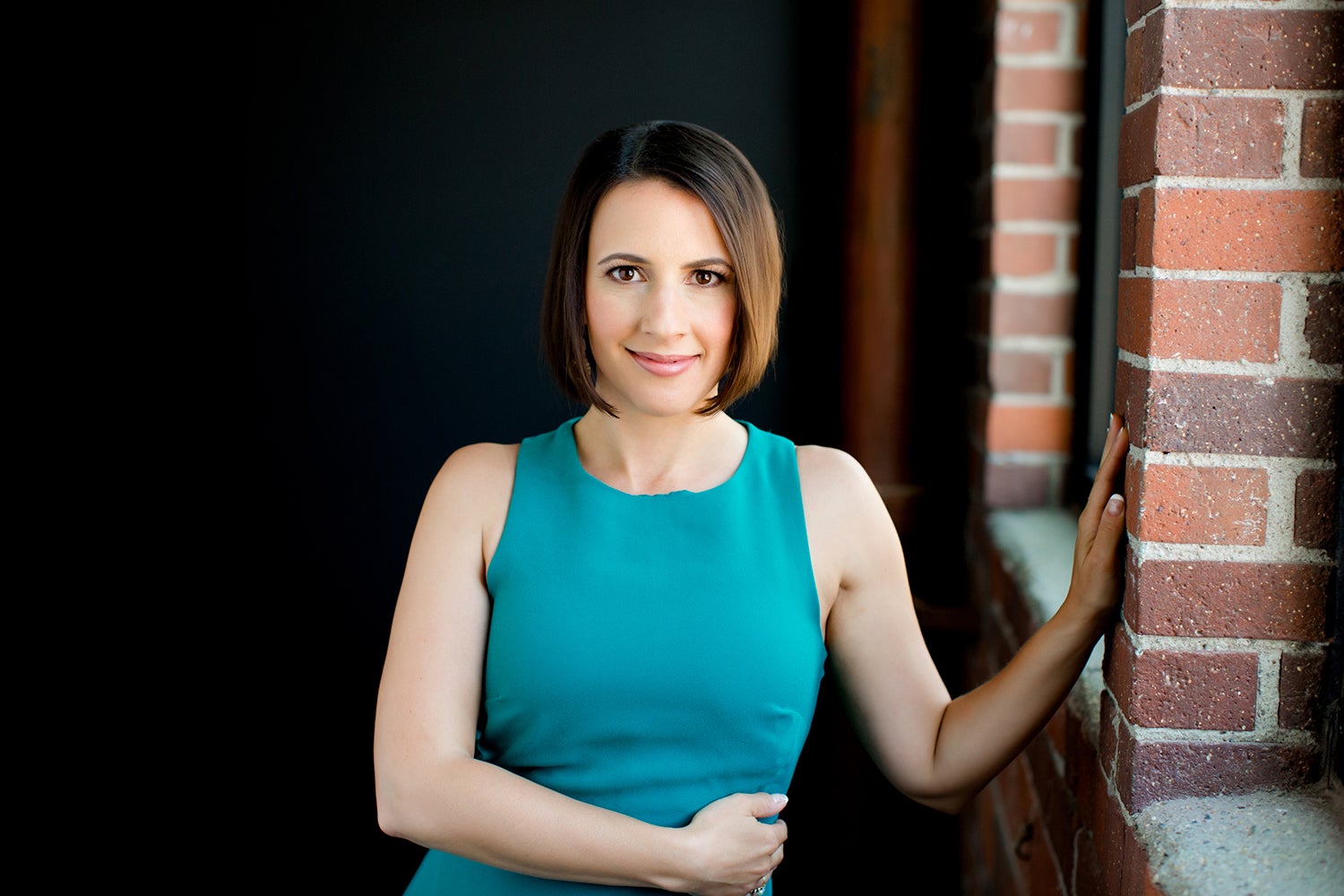The 50 States Project is a yearlong series of candid conversations with interior designers across the country about how they’ve built their businesses. This week, Des Moines–based Jillian Lare tells us about the boss who changed her life, why she’s taking on a business partner, and why she’s changing the way she charges to make up for all the time she can’t put on a bill.
How did you get into design, and what was your path to starting your firm?
My parents were not the kind of people who were going to tolerate me moving the furniture around—not even in my room! But I grew up in an 1870s Victorian, and my parents redid the house when I was about 10, so my mother gave my choices for wallpaper and paint to pick. They were also going to redo the ceilings to put popcorn ceilings in—this is like 1988, right? And I said, “Not in my room!”
You knew!
Mine was the only room in the whole house that did not have popcorn ceilings—and then eventually they had to go back and scrape them all off. That’s one of my earliest memories of being concerned about my built environment. When I was in high school, I remember my parents took me to see one of my second cousins, who was graduating from architecture school—I think in hopes that I’d want to be an architect. But I remember looking at one of his projects and thinking, “I don’t ever want to do this.” And that was the only exposure I had to the idea that you could do this as a living.
I was one of those kids that was always into art. I took lessons, starting when I was about 11 and all the way through college, with a private instructor—we did watercolors, oil painting, drawing, things like that. And looking back, even all the way through high school, I always thought that I’d be a high school art teacher, or an art history teacher.
Is that what you pursued in college, then?
No, I went to engineering school instead! I had the advice from my parents that you should do something practical, get a job at a well-established company, work there for 30 years, invest in your 401K, and then you can do what you want.
What did you think those 30 years were going to look like for you as an engineer?
I literally gave it no thought. I was very motivated as a student, and I actually really liked engineering as a student—I liked my classes and the problem-solving aspect of it, and I did well throughout school. I got a co-op at Intel in New Mexico, so I went out there, did well, and got a job offer from them for this elite program in the Bay Area for young engineers coming out of school.
I moved out to Silicon Valley, worked at Intel’s headquarters for about four months, and was like, “I hate this.” It just grated on every nerve in my body. I was miserable—within months, I was planning escape routes at every turn. And it wasn’t Intel’s fault—I loved Intel, and I worked there for six years.
While plotting to escape the whole time?
Yes, but I bounced around during that time. I spent about a year and a half in the Bay Area, then went to Portland, Oregon, and spent two years in Phoenix. I had moved to Phoenix with my then-husband, and it was while we were there that I was like, “I just can’t do this anymore.” I quit, started the interior design program at Arizona State, and loved it. In my first semester, we were learning about the history of furniture and design. I was a nontraditional student there, and when I was talking to an adviser, she told me how the school would bring in about 200 freshmen, but at the end of the year, they would only accept 25 or so into the program.
I’d been an engineer, so I was making a good paycheck, and now I was going without. I asked her, “So the chances of getting in are about 10 percent?” She said yes. And I was like, “OK, I don’t think this is a good plan.” So I quit the program at the end of the semester and went back to work for Intel for another year.
At that point, we moved back to my hometown in northeastern Pennsylvania, and I was working for a friend who had an oil and gas company. After a year, he had to let me go—he felt bad about it, and he said, “Is there anything I can do for you?” And I said, “Get me a job with your friend who’s an interior designer.” And he did.

So that job was how you got your start?
It was. I also got into the master’s program at a local university, and I audited AutoCAD classes while I waited for the semester to start. I went to work for her as an assistant, even though I had no experience beyond my semester at Arizona State and teaching myself SketchUp, and she was the kindest, most wonderful, generous employer I’ve ever had. She gave me literally every opportunity, probably to her own detriment—she was basically paying me to learn, which I did. She changed my life.
Who was she?
Janet Flack. She was this NCIDQ-certified designer who had worked for Gensler, and who was doing amazing work in in northeastern Pennsylvania. She had two other designers working for her, and she just threw me in—she never treated me any differently—and in that first year, I designed I don’t know how many bathrooms, a couple kitchens. I had never done any of this before, and she taught me.
I worked there for a year. And she was the kind of person that, when I told her I was getting a divorce and moving away, she gave me a hug and a huge raise, got me on health insurance, all this stuff.
That’s when you moved to Iowa?
Yes. By that time, I had met my now-husband, who works here in Des Moines for his family’s landscape architecture company, so he couldn’t move. We had decided that if we were going to give it a go, I would move to Iowa—so that’s what I did in 2008.
Did you keep working in the design industry?
Within a few months, I got a job at a kitchen and bath showroom—mostly because I had AutoCAD skills. All those kitchens and bathrooms I had drawn for Janet paid off! Working there was another great opportunity, in that it was a very detail-oriented company—I’ve found that a lot of kitchen companies are really only interested in selling cabinets, but this place was redesigning the whole room, modeling every detail, drawing to one-sixteenth of an inch and using AutoCAD. While I was there, I learned a lot about cabinetry construction and how cabinets fit together—all of the details that make cabinets look custom.
While I was there, I decided to apply to the master’s program at Iowa State, which I hadn’t been able to do in my hometown because I moved. I got in, graduated from there in 2013, got a job at a design company here in town, and then got an offer from the program to teach. I ended up teaching in the interior design program for about five years.
What inspired you to launch your own firm?
When I was teaching, I worked for another designer here—full-time in the summers, and then part-time when I was teaching. I would also sometimes take clients on the side—I had a lifestyle blog at the time, and some people found me through that, and then they started referring me to other people.
I had this one client who circled back—I had helped them with a little decorative refresh, and they asked me to help them with the new house they were building. This was in the fall of 2017, right before I had my son. I was six or seven months pregnant at the time, and I said sure. Shortly after my son was born in November, they came back and said, “Hey, there’s a little wrinkle on this house-building thing. We purchased a lot, which is in the neighborhood where the [Des Moines] HomeShowExpo is going to be next year—and so our house is going to be in the home show and it has to be done by June.”
That’s a quick turnaround!
I was on maternity leave, so I wasn’t teaching, but I was working my butt off trying to get this house done before I had to go back and finish teaching the rest of the semester. Another client came back around at about the same time and wanted their bathroom done, and then somebody else—and I just looked at my husband and said, “I think I can pay myself as much as I’m making teaching, so I’m going to do it.” So I put in my notice at the end of the school year. I had that one new construction home and a couple projects on the line, and I just decided, “I’m going to do this.”
How did the house for the home show go?
I gave them a discount on my design fee, and I didn’t sell them any product because I had just started and I didn’t have any accounts, so I helped them source things through local showrooms and online. I didn’t have a ton of input into the decor of the house, but I did all of the finishes, the space planning, the cabinetry, and I selected the lighting even though I didn’t purchase it. And as it turned out, the home won the show. It won several other awards, too—a couple first-place awards, a couple second-place awards, and then best in show.
Did you feel the impact of that right away?
It was amazing, because now I’m in with the local builders association, people know who I am, I’m making connections, and the project was being publicized by the builder, who’s well-known in town. I’ve gotten several large projects as a direct result. Taking a risk on that project, and being willing to do it at a discounted rate, was the launch pad for my firm.
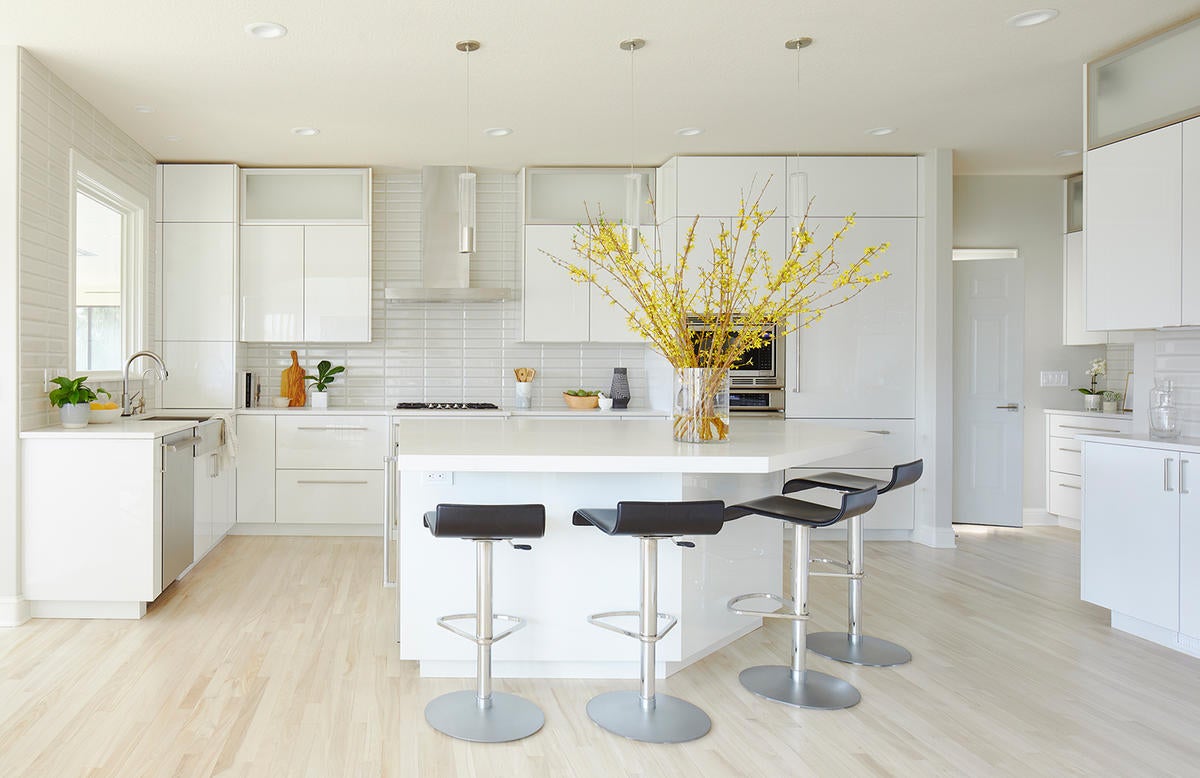
What does your team look like?
Up until now, it’s mostly been just me. I hired an assistant right before COVID, but I work out of my home, so I didn’t have her come for a few months. Then the weather got nice and we could work outside, but she left a few months ago to take a full-time job.
But a couple years ago, when I was working for that other designer in town, I worked there with a friend of mine from grad school, Alicia Held-Morris. When I was teaching, I was feeling creatively unfulfilled—we had such talented students, and I would see them doing these amazing projects and then go on to these incredible jobs at top firms in San Francisco and New York and Chicago, and I was like, “I need to do something.” I talked to Alicia and started working at the firm part-time, so we worked together for a few years.
I left before I had my son—I just couldn’t juggle everything anymore—but we stayed friends. We started having conversations about working together a few years ago, but then COVID happened and those conversations accelerated. We both went back to grad school in our 30s, we’re in our early 40s now, and we feel like we have the next 10 or so years to really establish ourselves. So we decided that we’re going to work together.
That’s amazing. What does that look like?
With COVID, she was only working part-time, so she told her employer that she was going to take projects on the side, and she started helping me out—doing projects that, quite frankly, I wouldn’t have been able to take on because I had so much work. We did a couple projects like that as a test run, and everything’s gone really well, so a month or so ago, we decided it’s time. She gave her notice, we’ve hopefully found a space that we’re going to lease, and we’ll be launching a new business as 50-50 partners in a few months.
Congratulations! That’s incredible.
Thank you—this is our first official announcement! We’re excited. She’s been working for another designer for nine years now, and she’s done really incredible projects all over the country—always really focused on the furnishings side of it. And I’ve been really focused on the kitchen and remodeling side. Plus, I really enjoy the business aspect—the financials, systems and processes—and she has a marketing background. So when you put those two things together—our two personalities, our experience and what we’re passionate about—we just feel like it’s going to be a really great partnership.
You’ve got the yin-yang thing covered.
Totally. She could spend hours putting things on a shelf and making the perfect display. I would rather be shopped than do that.
Did you find an aesthetic synergy, as well?
Absolutely. We knew from school that we loved similar things. One of us would be like, “Did you read this article in Domino?” and the other one would ask, “I was going to send that to you!” We followed the same designers, we had a lot of the same inspiration, and we really do strongly share the same aesthetic. We’re both passionate lovers of antiques, handcrafted items that show the maker’s mark, and history—and we see a real opportunity here in Des Moines to bring some of that aesthetic to the new-home construction arena, especially.
Is the space you’re looking into a design studio, or also a retail store?
We’ll have furnishings, but it will be an appointment-only space. It’s not that big, only about 1,000 square feet, so we’re seeing it more as a working studio. We’ve gone back and forth, but we both have small children, and it does seem like the retail aspect might take over our lives. We’re both overachievers and perfectionists, so it’s hard not to say, “Well, we could do that, too! We could totally succeed at that.” And maybe we could, but do we really want to do that, too? Being a business owner and a designer are already two very different roles that are sometimes at odds with one another—being a retail shop owner in addition is a little bit much for me for now.
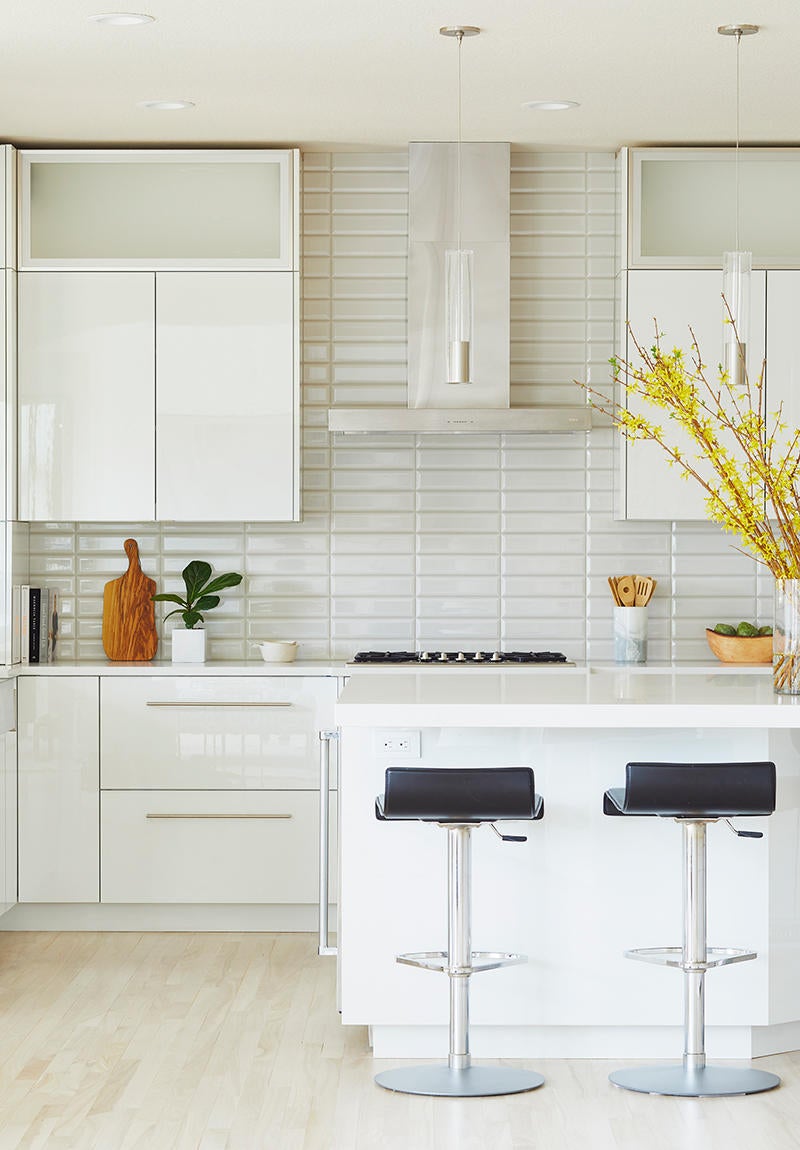

How does joining forces and relaunching the business change your model?
We’ve talked about this ad nauseam over the past year because we both, for lack of a better [phrase], “grew up” in firms that charged by the hour. But from the very beginning, when I worked for Janet, I could see that we would spend hours and hours working on a project, and then Janet would redline the timesheet and not bill for the total amount. I knew that was a thing from the very beginning, but I never fully appreciated it until I was doing it myself—and even more so when I was doing it for someone who worked for me.
In February or March, I spent a whole weekend doing it—going through every timesheet and weighing every line, sending a million invoices out and waiting for people to complain about them—and it literally made me sick. I told Alicia, “I can’t live like this anymore.” And so we are shifting to flat fees. I have done flat fees in the past, and I’ve definitely gotten burned on it, but I think, for me, there’s going to be a certain freedom in knowing that we can spend less time on something we’re really good at and more time on something we feel is really important but that the client might not value, and that it will all kind of balance out at the end. And I will not be fixating over invoices, deciding what to bill for, and ultimately shorting [myself].
Was there pushback on those hourly bills?
No, actually. That’s what’s funny. In the past three years, I have not received much—maybe once. Janet taught me from the very beginning to keep very detailed time logs, detailing out everything I did to five- or 10-minute increments, so it’s really hard to argue with that. But I also cut the time. I mean, I’m not going to tell somebody that I spent three hours looking for a pillow.
But also, and Alicia and I have talked about this a lot: How do I bill the client for the time I spend laying in bed thinking about their project?
Totally. Because your client benefits so much from the ideas that come to you in those off-hours.
Yes! My husband is a landscape architect, and he has marveled over the years—he’s like, “Whenever you’re not working, you’re still working. You’re reading design books for fun, and design magazines and design blogs, or paying attention to how things go together.” When he comes home from work, he’s not reading about landscape architecture, but we’re doing it all night, every night—I’ll spend an evening going through my super massive saved albums of inspiration images and studying them, but how do you send a bill for that? “I went through Instagram looking for inspiration images for your kitchen, saving them and categorizing them.” You can’t send a bill for that.
For me, part of it is also about living here—I’ve only worked as a designer here in Des Moines and out near Scranton, Pennsylvania, and there is a limit to what the market will bear in terms of hourly rates. People don’t give any thought to paying an attorney $350 an hour, but they’re not going to pay a designer that much. So at a certain point, the fact that I can put a kitchen together in five hours—why should you pay less because I’m good?
What else changes about the business when the two of you come together?
I think the burden of this business is different from other businesses because you’re so intimately involved in people’s lives and homes. There’s such an emotional investment there—theirs and yours. When a mistake happens, or when something goes wrong, or when the client is disappointed—because all of that happens from time to time—it’s such a lonely experience when you’re the only one absorbing all of that.
Late last year, I had a client call and just yell at me at 8 o’clock at night. I don’t even remember what she was mad about now, but it was something that she said I didn’t tell her, and I definitely did. She was saying things like, “This is unacceptable”—just very, very hurtful things—and I was totally alone with that. I had nobody to share it with. For me, there’s so much good stuff that I want to share, too, but I’m also looking forward to having someone to share the burden of the emotional weight of this business.
Are you and Alicia yin and yang in that respect, too?
It’s funny—we’re both the same Myers-Briggs, which is INFP, so we’re strong introverts, we’re both empaths, and we’re really sensitive people. So that client phone call, for me, was devastating.
I’m also looking forward to the collaboration—pulling projects together, having someone to bounce ideas off of and to validate your instincts. I’m confident now, but I feel like there will be a dynamic to [the work] that I didn’t have before. Her level of taste and experience and all the things she brings to the table will level up my business so much, and I’m looking forward to us building that together.
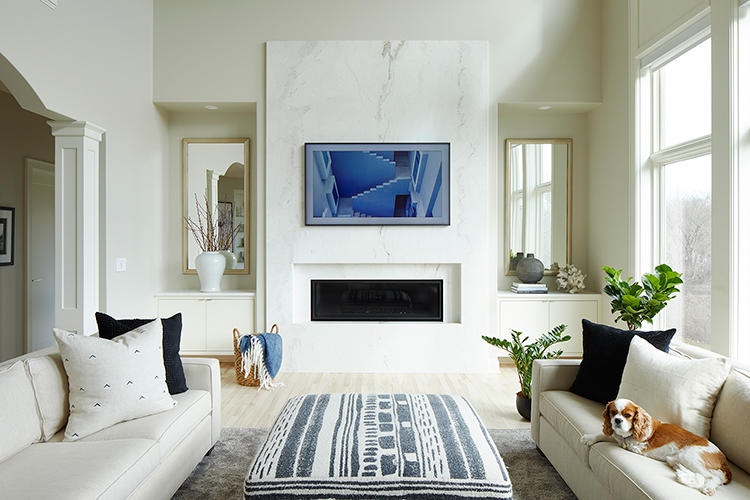
I usually ask people what they wish they had known from the start. But for you, I think the better question is: What will you do differently this time when you’re launching a new design business? Do you feel like you get to put some of those ideas into practice?
Well, yes and no, because we still have to service all of my existing clients.
Fair point.
But one thing we have talked about a lot is how to execute a project. I’ve taken a lot of coaching [sessions] from other designers and business coaches over the past couple years, and I think it all comes down to having a really strong process. And I think one thing that neither of us have gotten from our employers to date was that strong process or systems.
As an engineer, I need things documented, and I need it done the same way every time. One thing I’m looking forward to doing is implementing a rock-solid process and client experience. Every project is different, which is why this business is so hard to systematize. But at the same time, we do the same things for every project, so just having the rhythm and flow to that—and the ability to project when a job will be in a certain phase so that we can say yes to the next person, put them on a list, and say, “This is when we can start”—not having that has gotten me really stressed out in the past.
What’s the ideal firm size for your new venture? Will you keep the firm to just the two of you, or do you have dreams of running a design empire?
When we get our space, we definitely want to bring on at least one intern—I’m really passionate about giving students at Iowa State the opportunity to do high-quality internships. Maybe at some point, we have a full-time drafter. That’s something that’s really hard for me to let go of because I like doing it, but it’s also what’s holding me back because I don’t have enough time to do it.
Back when Alicia and I first started talking, we were like, “We could have a whole company of junior and senior designers and take on projects all over the country.” And I think it’s a COVID thing, but we’re both homebodies who like being with our families, and we’re like, “No.” I think we both see this being a good living, great design, serve people really well, and keep it as small as possible.
It’s COVID, but I think for me, some of that also comes from getting such a late start in this business. I was 30 when I started my master’s, and by the time I started this business I was 38 years old.
Did you feel like you had missed out on something?
Only when I would listen to podcasts or interviews with other designers who did their undergrad in design and spent their 20s working at some amazing firm—a lot like many of my former students. It’s what I did as an engineer: You get a great job, do a good job at the job, and then move your way up the ladder. I look at my engineering friends, and they are vice presidents and managers at the companies they work for, and very successful, and it’s like, “Well, that’s where I would have been if I had stayed there.” It was hard to make a pivot, start over, and go back to work for very little money—that was an ego check, and I’m really glad I went through that.
Back to your question, though, yes—that’s definitely given me pause. I don’t have a regret, but I do think if I had come out of school in a larger metropolitan area, I definitely would have gone to work at an established, top-level firm for three to five years to learn as much as I could. That is 100 percent what I told my students to do, but we just don’t have that here. There are very few residential designers here that have employees.
What is the design scene like?
Here in Iowa, we’re so insulated. I’m in a suburb of Des Moines, which is our biggest city. It’s right in the center of the state, at the intersection of I-80 and I-35, and we don’t have a design center, or even many large retail stores. We have a West Elm and a Pottery Barn, and then we have a couple of local and Midwestern chains, but we don’t have a lot of the stores you’d think of. For example, we don’t have a CB2 or a Crate & Barrel. And so finding and sourcing things can be super challenging. It’s getting better, but even the level of exposure your clients have to design is different, I think, than it would be in other areas. And that is a constant struggle.
Is it about quality, or is it about just style in general?
I think it’s a little bit of both. What’s great about living here is that we have a really stable economy. My husband works in high-end residential landscape architecture, and he always said that even in 2008 and 2009, things weren’t great, but they were not calamitous—it was a bump in the road, but it wasn’t as bad as it was in so many other places. We also have a booming housing market. It seems like there’s no end in sight, and it’s at all levels—from spec homes to multimillion-dollar homes—which means there are a lot of opportunities. But on the product sourcing side, it’s a challenge, particularly because we’re right in the middle of the country—we’re slightly closer to the East Coast than the West Coast, but it’s expensive to ship things here. We’re paying that higher freight charge, and it takes longer, even before COVID.
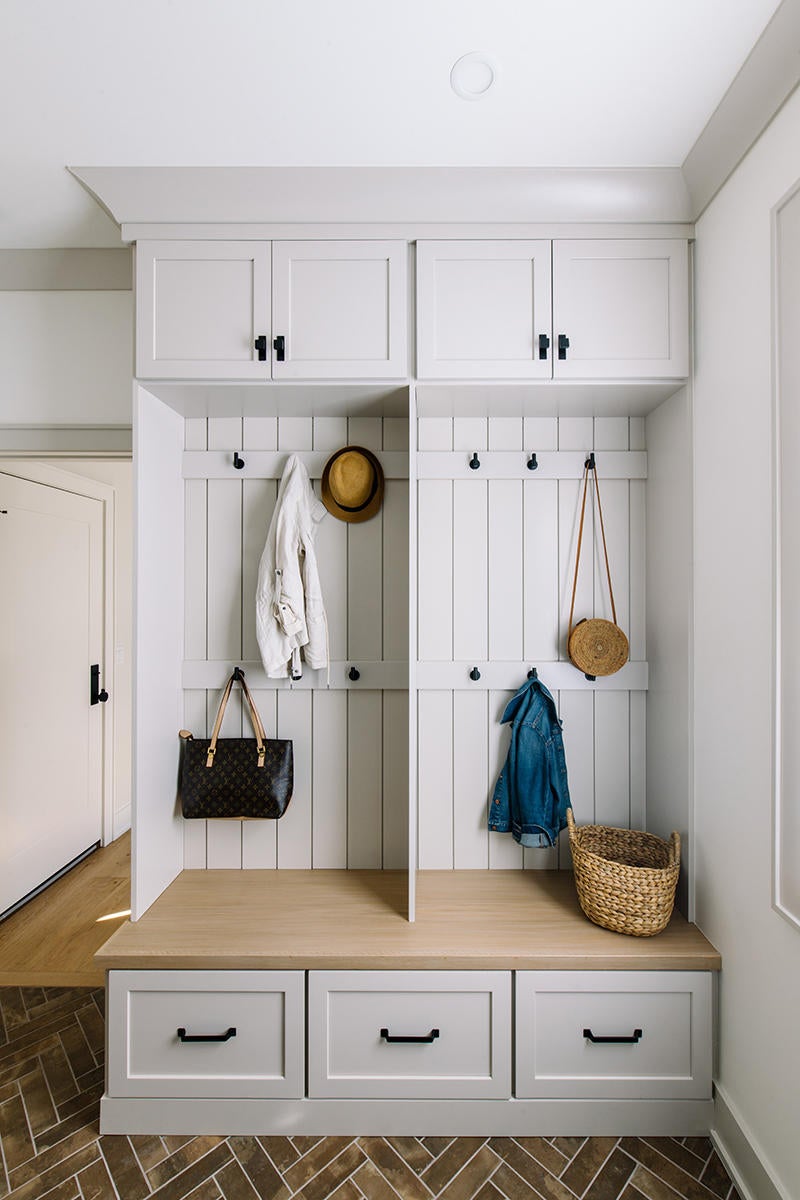
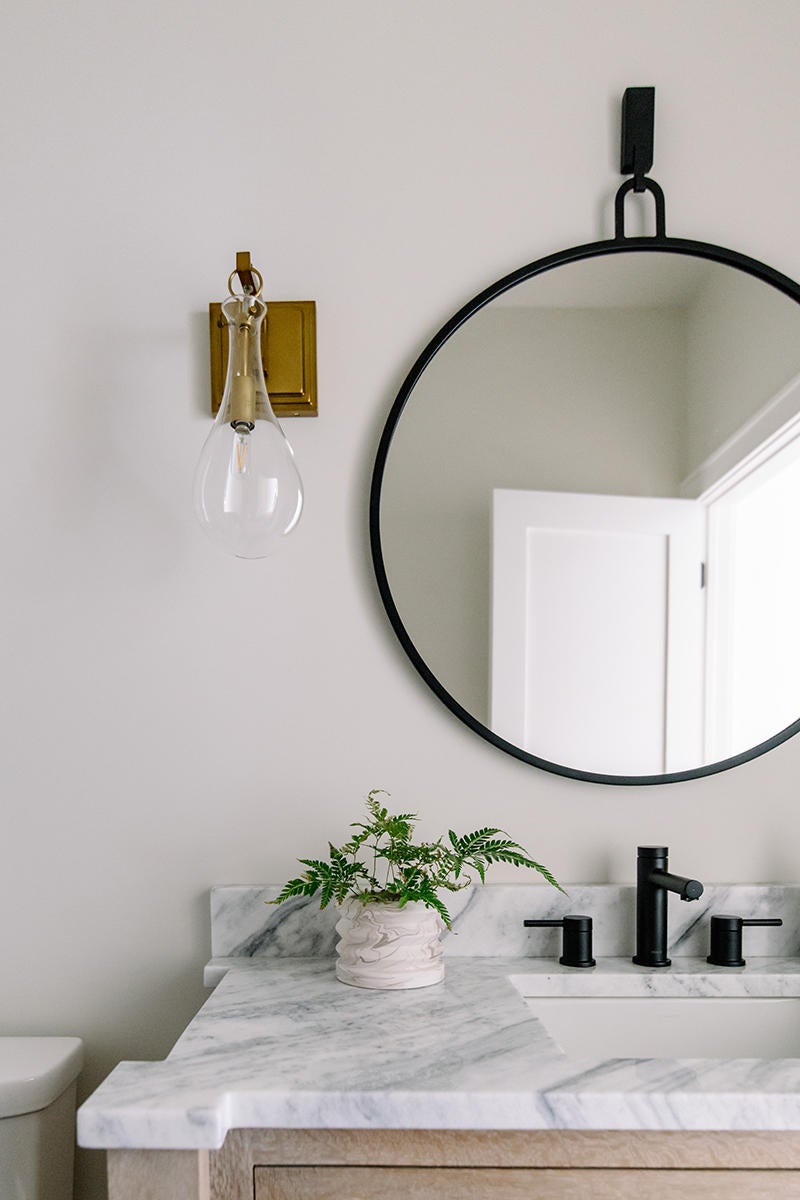
Last week, Sunshine Brooks and I talked about a certain price sensitivity around what design should cost. Does that go hand in hand with the sourcing and with that perception of quality?
It does. I feel like part of my job is to educate people around how much it should cost and what kind of quality to expect. A lot of clients I work with see a lot of value in investing in the physical structure of their home. They want quality materials in terms of wood flooring, plumbing fixtures and tile. They don’t seem to be willing to skimp on those aspects of the home. But the other things are an afterthought—the furnishings, window treatments, and sometimes even the lighting, are less of a priority, I would say, in terms of investing in their long-term quality.
How do you handle that in your work? What conversations are you instigating with clients, and when does that start?
It has been starting earlier and earlier. When I started, I was taking anything, sourcing whatever the client wanted, they were giving me a number [for the budget] and I was trying to work within it. I’m only three years in, but I’m at the point where I want to do a budget very early in the process and get that out on the table, and use that to have a conversation with them about what they’re expecting in terms of quality. I actually have a spreadsheet I put together that lists everything we would be sourcing for each space, whether it’s the bathroom or the bedroom or the kitchen or the living room. I have a good-better-best column and a target-budget column, so we look at that and talk about what you can expect at each price point. If your expectation is that a sofa should cost under $1,000 but my “good” sofa is starting at $2,800 or $3,000, then maybe it’s not a good fit.
I like to get those numbers out there early. The process I’ve evolved into starts with a space plan, which I use to create this budget sheet. Once we have that space plan agreed upon, we know that we need two sofas, two chairs, a cocktail table, two end tables, and so on. We use that to make our list, and then to make our budget, and then really say to people, “We’re seeing that this would range anywhere from $20,000 to $50,000. What are you comfortable with within that range? When you break it out by each piece, people can really start to see how it all adds up. That’s been helpful. In the projects I have done that for in the past year, there have been several that we had no pushback after presenting the final selections because we’d fallen within the range that we’d agreed to in that meeting.
That’s amazing.
It really is transformative, because otherwise, I’m just guessing what you think is appropriate to spend—and I might guess too low, and then you’ll be disappointed with the quality, or the options, or the design.
Is there sometimes a misalignment between what the cost is and the quality expectations? How do you talk about what you get for what you spend?
That’s such an important question. I just delivered some furniture the other day from what I would consider to be one of our lower price-point vendors, and I was thinking, “I really hope they’re satisfied with the quality of this, because in my mind, it’s not inexpensive—like, it’s not Ikea, but it’s definitely not cheap. It requires a lot of upfront conversations about how it’s built, where it’s built, the finish level. It’s saying, “If we source a table at this price point, this is what you can expect in terms of quality and construction.”
Clients can also learn as we go. I have one client who is very design savvy, and as we’ve furnished her home and she’s looked at the pieces, she’s been able to say, “I know we had a certain price point for this dresser, but I’m not thrilled with the quality of the drawer glides. For the next piece we purchase, I want to make sure it has good hardware.”
What does success look like for you?
With both of us being artists, Alicia and I have talked about maybe someday having a textile line or wallcovering line or a small furniture line, but that’s a 10-year thing for us. In the meantime, we want to establish a really solid firm with great processes and to make beautiful homes that make people happy.
To learn more about Jillian Lare, visit her website or find her on Instagram.
Homepage image: Jillian Lare | Whitney Warne
















